Get PeakVisor App
Sign In
Search by GPS coordinates
- Latitude
- ° ' ''
- Longitude
- ° ' ''
- Units of Length

Yes
Cancel
Share ×

Scan the QR code and open PeakVisor on your phone
❤ Wishlist ×
Choose
Delete
Finland is a country in northern Europe that’s located on the Scandinavian Peninsula. It is one of Europe's most sparsely populated areas, often called "The Last European Wilderness". It has many natural landscapes and ecological regions, as well as many opportunities for outdoor adventure. Although it is far from being the most mountainous country in the world, there are 4529 named peaks in Finland. The Halti is the highest (1,328 m / 4,478 ft), however, the most prominent is Taivaskero (809 m / 2,654 ft).
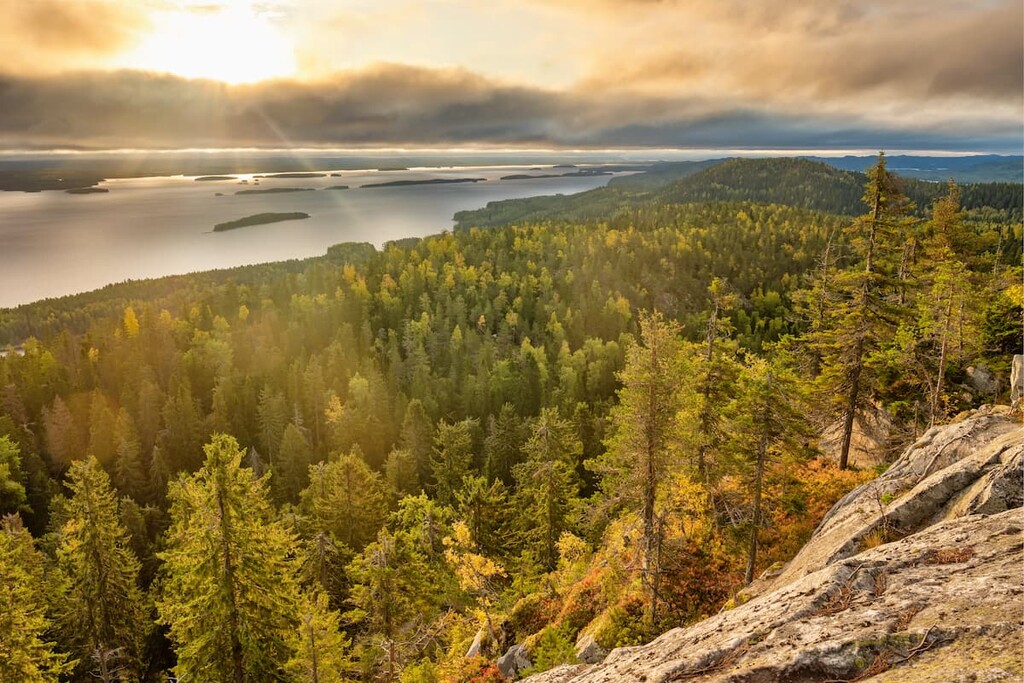
Probably, as in the case of many other countries of the world, the name Finland comes from the name of the people who inhabit its territory and make up the majority of its population, the Finns. But we can't be sure of that, because no one has yet established exactly where the word comes from.
According to one version, the word comes from the Old English word “finna”. The English used to call everyone who lived in Scandinavia by that name. According to another version, it is a Swedish word, where "fin" is a "hunter" in the ancient Scandinavian language.
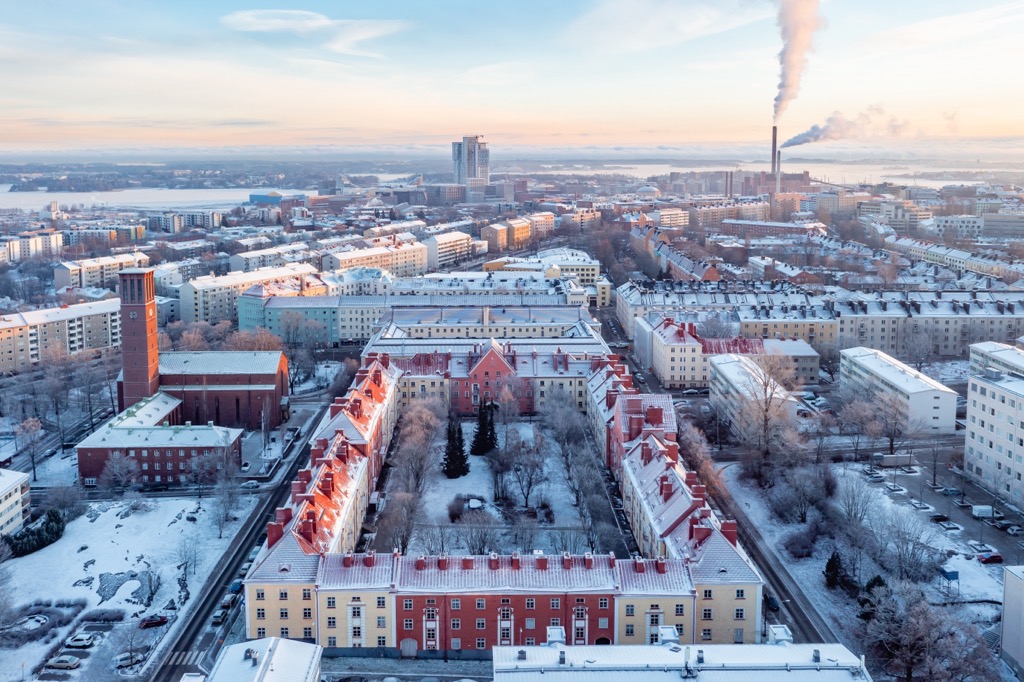
In any case, these and other versions have something in common: They describe a particular region and the people who live there. It is also clear that this is a foreign word, not a word from the Finnish language.
The name of the country in Finnish is Suomi, and its origins are even more mysterious. I like the theory that it came from the words "suo" meaning "swamp", and "maa" meaning "land", so we have “swampland”. It is a direct reference to one of the main landscapes here and outdoor recreation you can do in it, namely walking on duckboards through a swamp. Thus, you can walk for many kilometers through the swamp and different wetlands of Finland without falling through into the mud. Genius!
Finland is located in the east of the Scandinavian Peninsula. It borders Russia, Sweden, and Norway. On the southern (and western) borders of Finland, there is the Baltic Sea, through which you can easily and quickly get to Estonia by ferry, as well as to other nearby countries like Latvia and Lithuania.
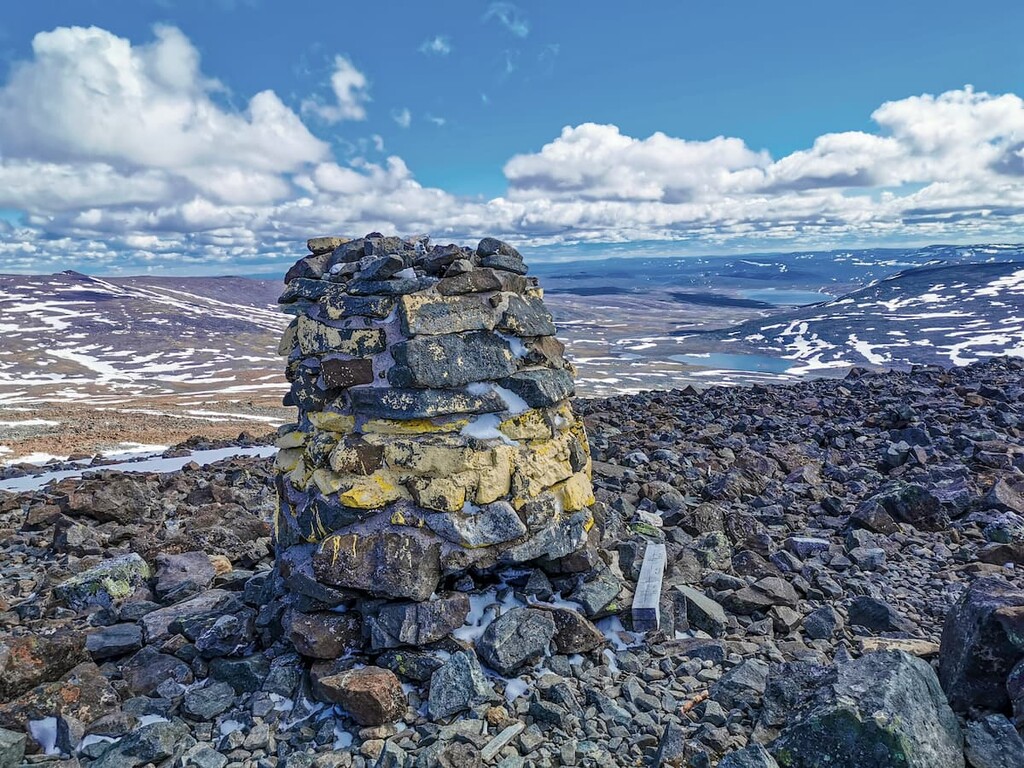
Thus, Finland is one of the most northern countries in the world. Approximately 25% of its territory lies above the Arctic Circle, where there are polar days and polar nights when the sun does not set or does not rise from the horizon for months on end.
The total area of the country is 38,455 sq km (130,678 sq mi). To drive the entire country from south to north by car would take you 14.5 hours (1,262 km / 784 mi) or about the same as getting from New York City in the state of New York to Atlanta in the state of Georgia in the US.
From west to east the country is exactly half as long, or about 600 km (372 mi). This distance can be covered in 7 hours by car, which is about the distance between the cities of Los Angeles and San Francisco in California.
The country is divided into 19 regions. The main ones are the metropolitan Uusimaa in the south, Lapland in the north, North Karelia and South Karelia in the east, Central Finland, Ostrobothnia in the west, Southwest Finland (Finland Proper), and finally, the Åland Islands (Ahvenanmaa), or "Finnish Hawai’i.”
I've been to Finland 10 times already and I never get lost or bored. On the contrary, this seemingly monotonous country, where there are "only lakes, forests and swamps", as some travelers say, is interesting to explore, with new areas to discover on each trip.
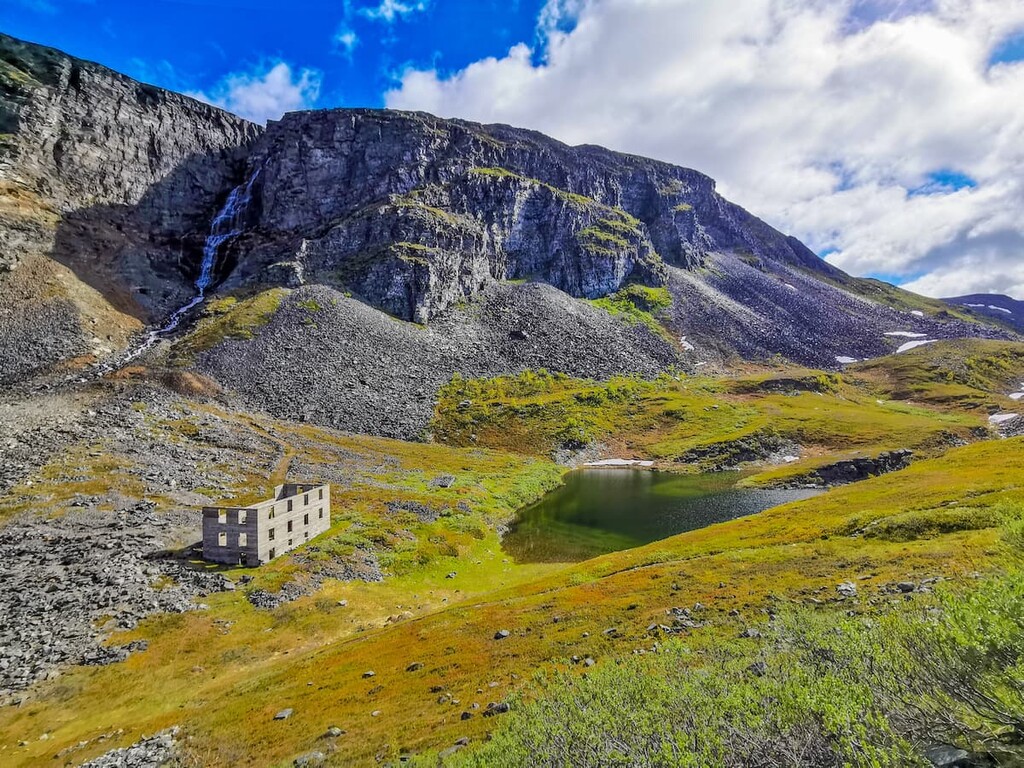
The main feature of Finland's landscape is the vast mostly pine and spruce forests. Some of them are old-growth forests or quite rare in the world. They cover up to 70% of the country. The Finns, who live in the nation with a great sense of humor, like to joke about themselves saying that they live in forests rather than villages or cities.
Nevertheless, if you look closely, the landscape of Finland is quite diverse for such a monotonous “forest" country. Finns divide their homeland into the four main natural regions, which I myself once learned reading a great book Kotomaamme koko kuva—the fourth volume in the Finnish Landscape series of books celebrating Finland's 100 years of independence.
So, here are some need-to-know pieces of information about Finland’s diverse landscapes:
Southwest Finland is the maritime part of the country. It includes many thousands of kilometers of coastal areas of the Baltic Sea to the south, southwest, and west of Finland, namely the coast of the Gulf of Finland and the eastern shore of the Gulf of Bothnia.
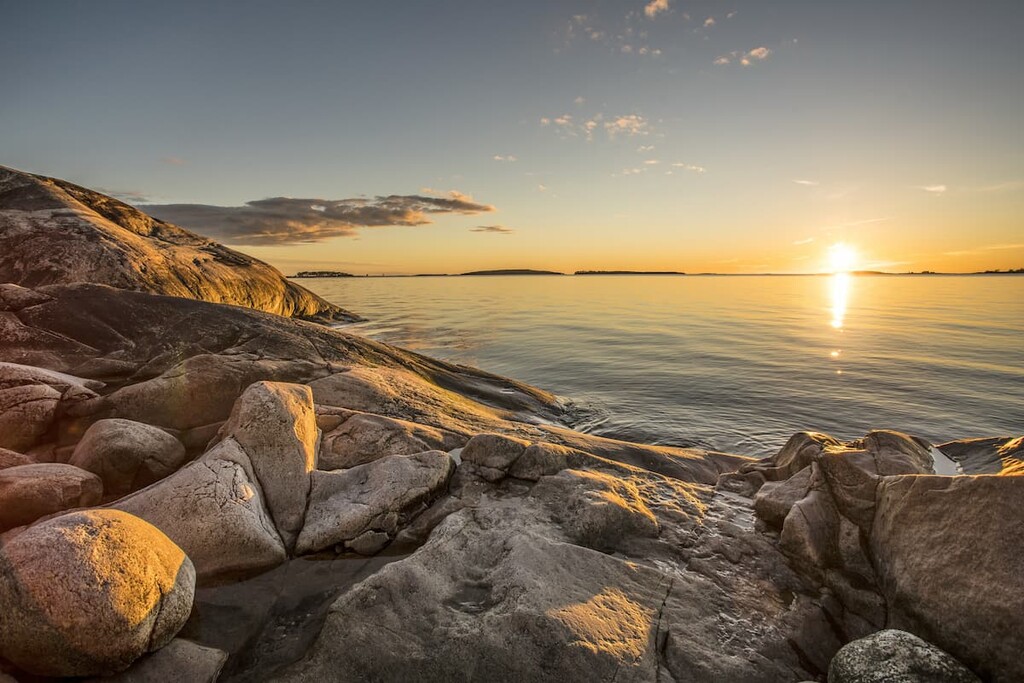
Here you can also find the world's largest concentration of islands (50,000), which form picturesque skerries, where you can travel by boat or bicycle from one island to another. Another name for this area is the Archipelago Sea or Archipelago National Park.
But there is another no less famous archipelago in the south of the country, the Kvarken Archipelago, a UNESCO World Heritage Site.
The area of Eastern Finland is often simply called "Lake Land." Finland has a total of 190,000 lakes, most of which are concentrated here in the east, including Finland's largest lake, Saimaa. Saimaa is also the fourth largest lake in Europe, after Ladoga Lake and Onega Lake in the Russian part of the Karelia region, and Vänern Lake in Sweden.
The lake and forest landscapes in this part of the country are considered the national landscapes of Finland. Indeed, they are most often associated with the country by locals and tourists, with the landscapes of Lapland trailing not far behind.
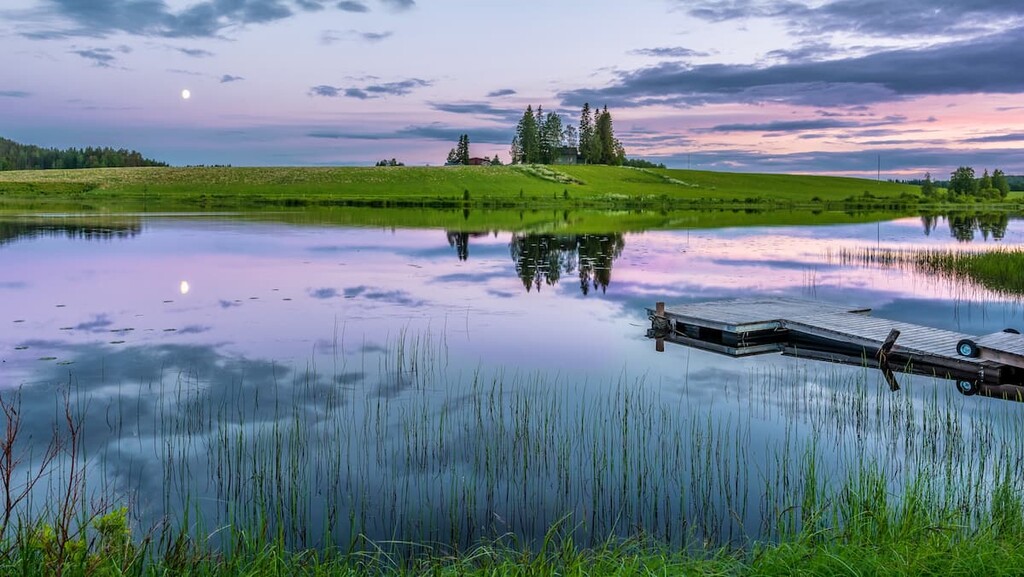
Additionally, Eastern Finland is also known for its hills and idyllic farmland landscapes.
Lapland is the northernmost and most mountainous part of Finland, where the vast majority of the country’s peaks are located.
The southern and the northern parts of Lapland are quite different. In the south of the region, there are still forests, while the north is actually the Arctic, where forests, lakes, and swamps give way to tundra with a lack of rich vegetation.
The landscapes of Lapland merge with infinity. "It's not far from here to outer space," as my favorite writer, Mariusz Wilk, says in his books.
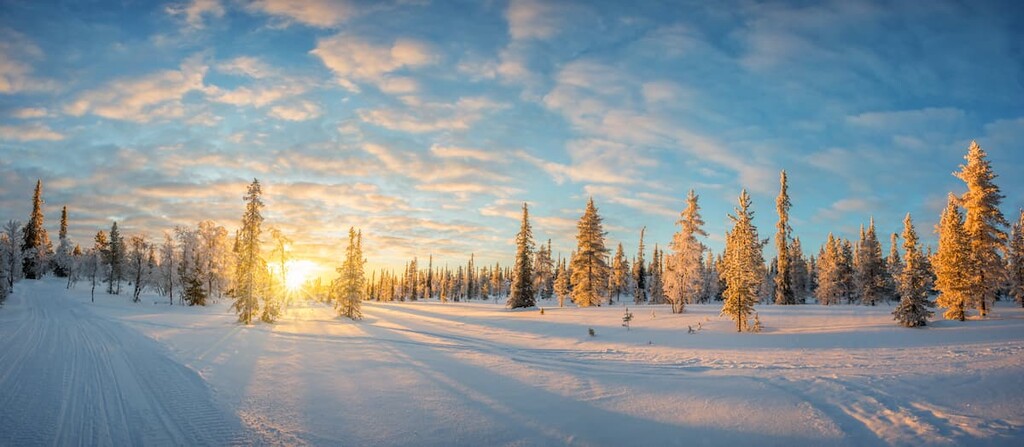
Helsinki is the most popular region in Finland for tourism. Geographically, Helsinki belongs to Southwest Finland, but the Finns themselves allocate it separately—in my opinion, rather for advertising purposes. Because it is the only major city in the country, most travels around the country start from Helsinki, too.
On the other hand, perhaps they are right and Helsinki does deserve to be its own region. If you are not going to Lapland, Lake Land or Archipelago, in Helsinki you can find the sea, pine forests, lakes, and swamps at the same time, and climb on low rocks—all within the city limits.
In fact, this is what I also always liked about Helsinki. The city blends in with the natural landscape—not the other way around.
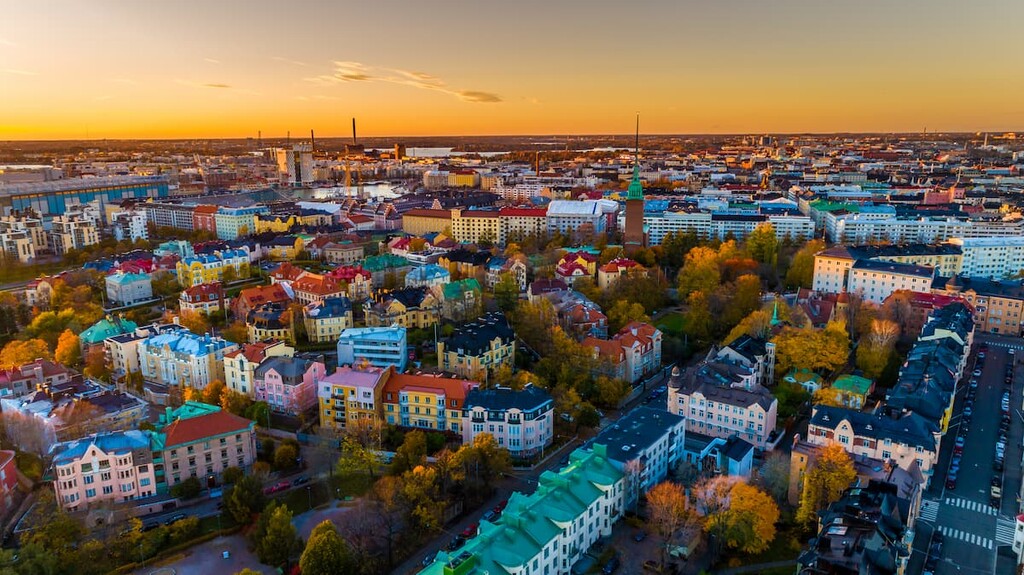
In the Köppen climate classification, Finland has a subarctic climate with warm and dry summers (an average of 17 °C (62.6 °F) in July) and cold and snowy winters down to -30 °C (-22 °F) in January.
But thanks to the warm Gulf Stream, on average Finland is not as cold as Siberia and Alaska, which are at the same latitude. Rather, the average temperatures range from -6 °C (21.2 °F) in the south to -14 °C (6.8 °F) in the north. In summer, too, it can be hotter than usual—up to 30 °C (86 °F) during warm spells.
The main feature of Finnish weather is its incredible instability. In my memory, to see a whole week of sunshine without cloudy and rainy weather is a rarity. It's more often overcast than sunny—there are only 60 clear days a year here where the sun is shining. Even in summer, be sure to pack warm clothes, such as those you might wear in the spring and fall, while traveling to Finland and especially while hiking in the country.
Geologically, the entire territory of Scandinavia is located on the Baltic Shield (a segment of the Earth’s crust), which is 1.5 to 3 billion years old.
However, if you look closer, the territory of Finland is far from homogeneous in terms of geological composition. In addition to the very old rocks, there are also relatively new geological strata that can be divided into five main groups: Scandinavian Caledonides, Kola Domain, Karelian Domain, Svecofennian orogen, and Jotnian sediment. If you are into geology and Finland, these names will not seem new to you.
If not, in clear language that will be understood, not only by professional geologists, but also by us hiking enthusiasts, the main rocks here are various kinds of granite, gneisses, shales, and quartzites. To see all this geological diversity you also don't have to travel inside the Earth like the characters of Jules Verne's book Journey to the Center of the Earth.
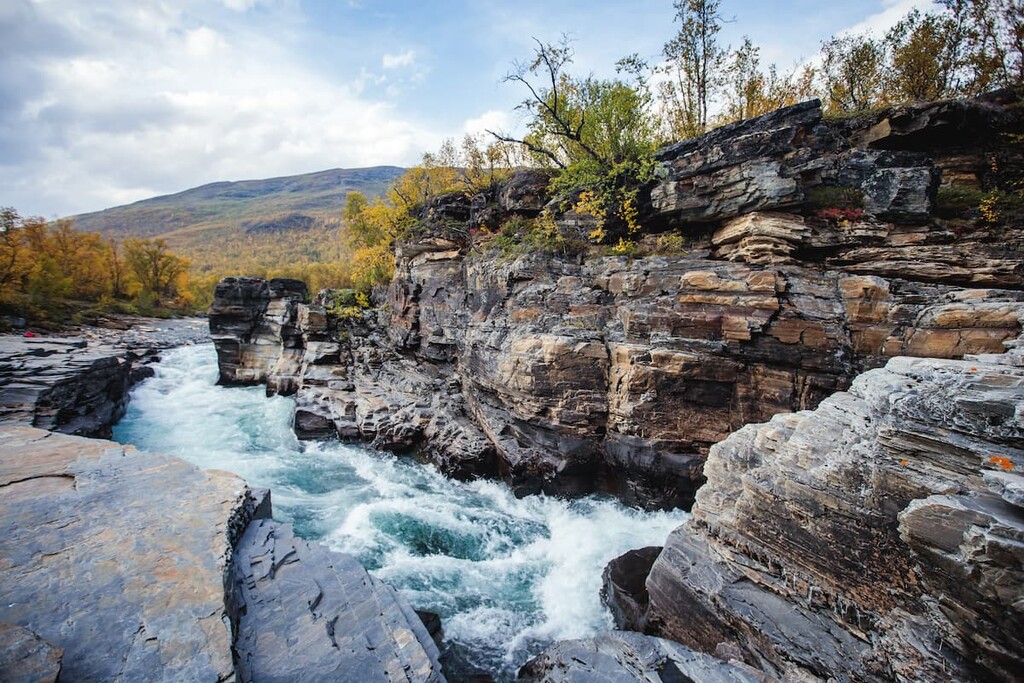
As you walk through the different natural areas in Finland, you will see many granite rocks and huge boulders in the forests all over the country, many of which seem like something scattered them on purpose. However, these are traces of the glaciers that once covered all of northern Europe.
Finland's nature is called a wild for a reason. This time, for sure, this is not an advertising slogan, it is a reality that you will have to face.
For example, if seeing brown bears in the Alps is rare, here you have to be prepared for it. In late May 2016, I saw two small baby bears during a short hike on the northern shore of the Ladoga Lake (formerly the territory of Finland), which was supposed to be an easy walk, but turned into a real adventure: I stayed up all night, tossing and turning in my tent with a real fear waiting for the mama bear to come. I was lucky. She didn’t. By the way, the brown bear is Finland's national animal together with white swan.
In general, the nature of Finland is literally everywhere—you do not even have to go into the woods. I also saw much smaller (but no less wild) animals like hares and foxes right on the streets of Helsinki. In July in Helsinki, there are a lot of geese, and many other wild northern birds such as ducks, loons, cranes, swans, and others that nest in the lakes right in the city.
All year-round in the lakes, there are perch, carp, pike and other fish. In the rivers, the main fish is Atlantic salmon.
Among other water animals, I should also mention the Saimaa ringed seal (Pusa hispida saimensis), of which there are only 390 individuals left, all of which are threatened with extinction. It is only one of three lake seal species in the world, and it lives only in Saimaa Lake, where you can see them with relative ease.
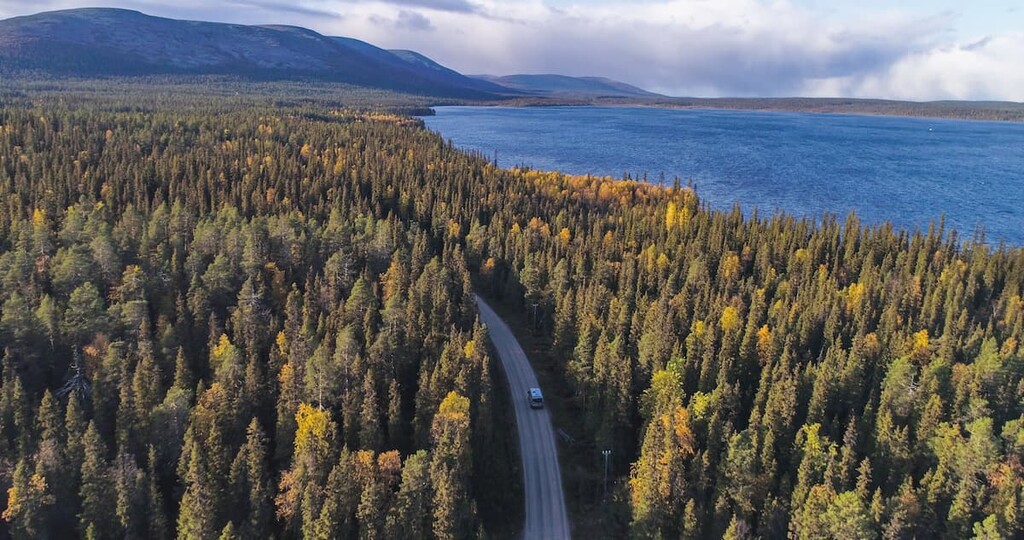
Of the dangerous animals, you should really beware of venomous snakes, like the adder. In summer, they are quite numerous in Finland. Always watch your step, even when walking on designated paths, as these snakes like to hang out on them in order to be in the sun.
Finnish flora is as wild as Finnish fauna. If you leave the paved path in a national park, you can easily get lost in taiga forests. Therefore, even when walking along the well-equipped and marked trails in the park, you should always take a compass with you and know how to orient yourself before heading out into the wilds of Finland.
Another important thing to know about the Finnish forest is that not all mushrooms and berries can be eaten. About half of them are poisonous.
However, the other half (i.e., the non-toxic half) is more than edible and, to be honest, incredibly tasty. These tasty berries and mushrooms include blueberries, cranberries, cloudberries, ceps, aspen mushrooms, and chanterelles. Before you go to the woods, be sure to research how to identify edible plants and, when in doubt, don’t eat something until you can confirm its identity.
Finland's highest peaks reach a maximum height of 1,324 meters (4,343 ft). They are concentrated on a tiny (relative to the rest of the territory) piece of land on the border with Norway and belong to the Scandinavian Mountains.
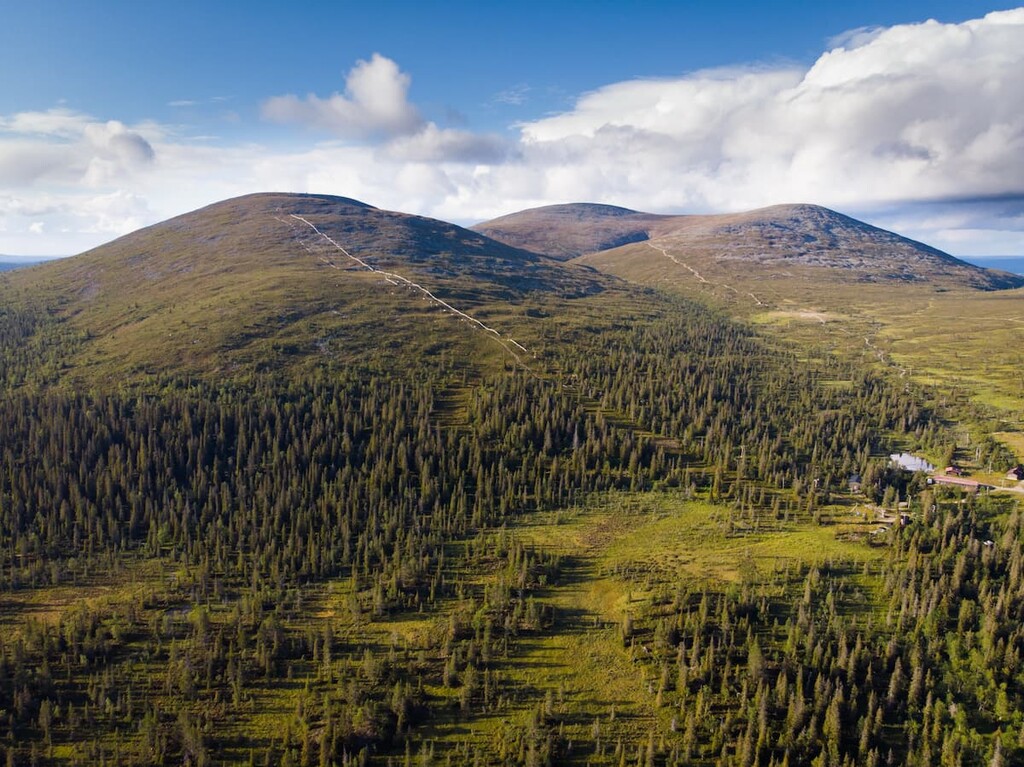
Therefore, for example, the country's highest peak, Halti, is the subject of a long-standing dispute between the two nations. In fact, the peak called Ráisduattarháldi (1,361 m / 4,465 ft) is on the same mountain as Halti and is located on the Norwegian side of the border. But, due to their lack of higher mountains, Finns call the mountain theirs and consider its height to be the highest point on Finland's side.
If you are not going to go to Lapland, you can get in touch with Halti in two other ways. For example, this is the name of Finland's largest and most famous outdoor clothing and gear brand. It is also the name of the main nature museum of Finland Haltia, located in Nuuksio National Park near Helsinki, where you can learn all about the nature of this country.
Ok, let’s move on. Ridnitšohkka (1,317 m / 4,320 ft) is the second and the real-highest point in Finland, though it is the highest mountain with a peak that’s fully contained within Finland. It has the most extensive area of permanent snow in Finland, however, like everywhere else on the planet, the snowy peaks are melting, with less snow on them every year.
The other highest peaks in Finland are:
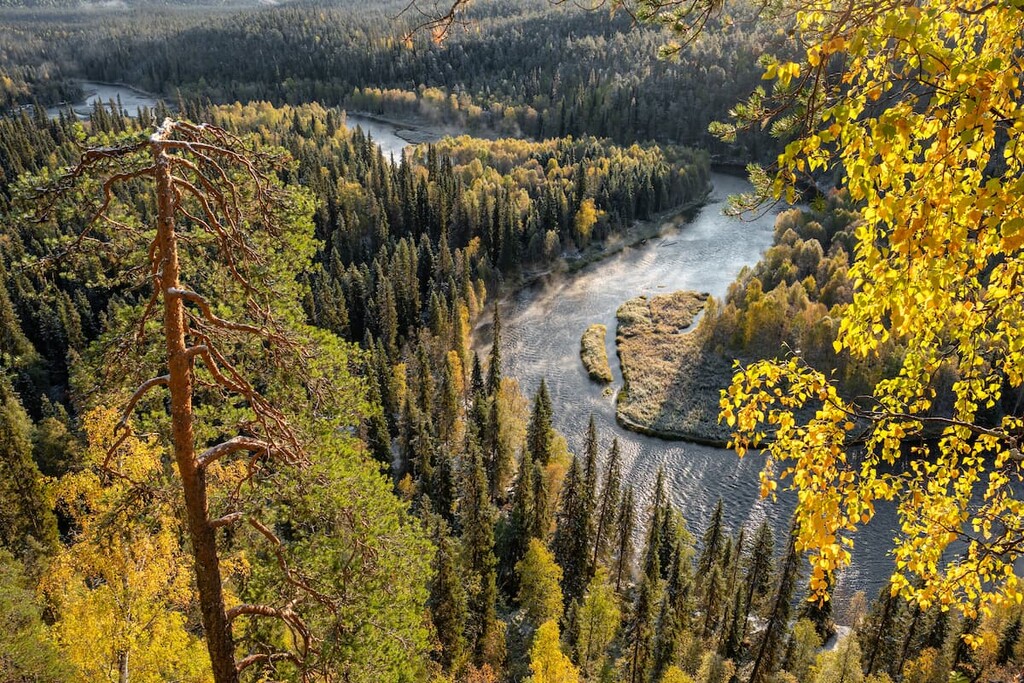
Most of Finland's smaller mountains are also concentrated here in the Lapland region. These are low mountains of up to 1,000 m (3,280 ft) in elevation, but they have an average elevation of about 500 to 800 m (1,640 to 2,624 ft). The most famous of these mountains is the group of fels known as Pallastunturi, which is located in the Pallas-Yllästunturi National Park. The view of the vast expanses that open from its summit is included in the list of 27 national landscapes.
Another famous mountain, Korvatunturi, is located in the nearby Urho Kekkonen National Park. According to legend, it is on this mountain where the Finnish Santa Claus lives. You can climb the mountain, but only with permission from the border service because the peak is on the border with Russia.
The chain of Lapland hills stretches further south along the entire eastern part of the country to the region of Karelia. However, the further south you go, the lower the elevation of the mountains in the region.
These fells are the remnants of very ancient mountains, the Karelides, that existed in Finland some 2 to 3 billion years ago. Nowadays, we can only see the bases of these mountains. But, imagine what they looked like when they reached the height of the Alps, where the highest mountain is Mont Blanc (4,807 m / 15,774 ft)!
Here in Karelia, in the Koli National Park, the most famous of these fells is called Koli, like the national park (or rather vice versa). It is composed of white quartzite that’s about 2 billion years old, and it is as popular as the high mountains of Lapland. It has several peaks, which from north to south are Ukko-Koli (346 m / 1,138 ft), Akka-Koli (338 m / 1,109 ft), and Paha-Koli (331 m / 1,086 ft), all of which are named after pagan gods.
The magnificent scenery that opens from these peaks to Finland's fifth-largest lake, Pielinen, is also among the 27 national landscapes.
Yes, you got that right: Most mountains and hills in Finland can be easily climbed while hiking, and some can even be reached by mountain bike. In the winter, you can also ski down from them. The country's largest ski centers are also located in Lapland and Karelia.
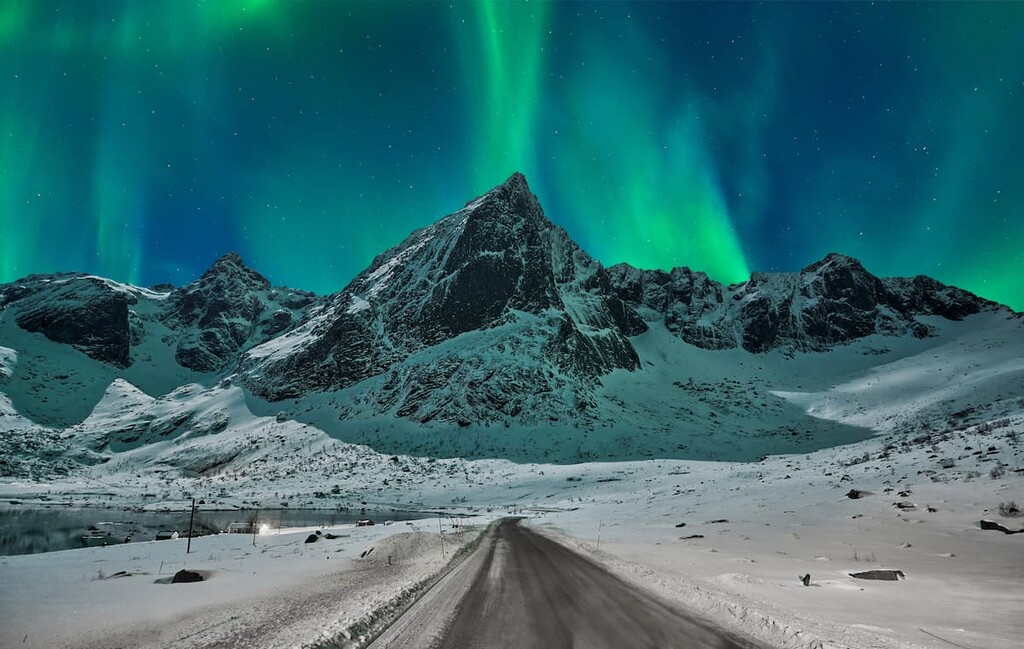
I was here at the end of May on a hike, and liked it so much that I didn’t want to go back to civilization. As a result, I spent a couple of extra days in the park eating some canned food that other people left in the camping area, because I was out of my own food and there are no stores in the park. However, I recommend visiting it in September as well when the trees turn yellow, orange and red.
Finland has several main types of natural areas, which are designed for various types of outdoor activities—primarily short hikes of 1 to 20 km (0.6 to 21.4 mi) and longer hikes. However, there are also opportunities for biking, kayaking, birdwatching and, of course, skiing and other winter sports.
There are a number of different categories of hiking areas in Finland, all of which boast plenty of trails and opportunities for adventure. These include:
These are different long hiking trails usually through the national parks. In five days in Koli I was able to see all sides of the park, something you can't do in a one-day short trip:
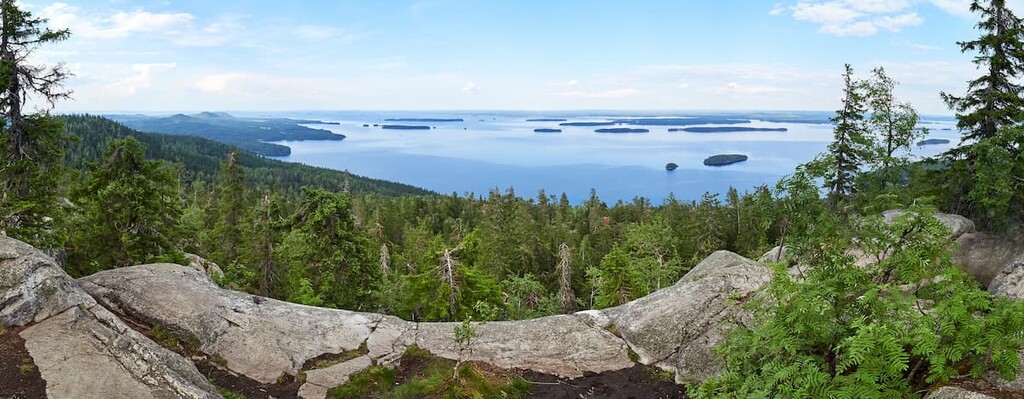
It’s also worth mentioning the route in the north of the country called the Nordkalott Trail or Arctic Trail. It is a long trail of about 800 km (497 mi) that passes through the northern parts of Norway, Sweden, and Finland.
The Finnish part is “just” 70 km (43.4 mi) and you can complete it in 6 to 7 days. In my opinion, this is a difficult route, for which you need to be prepared physically and mentally. But start from the little—learn a few basic things you need to know before going hiking in Finland on this and less challenging trails from the local guide.
This is the long route through the islands of the Archipelago National Park with start and finish in the city of Turku. The route has two options of 120 km (74.5 mi) in 2-3 days and 250 km (155.3 mi) in 5-6 days. Between the islands, you need to cross the water by the ferry. You can stay overnight in hotels in the villages on the islands, too. Fantastic!
For skiing and snowboarding enthusiasts, there are more than 75 ski resorts in Finland. They are located throughout the country, but the greatest number of areas for skiing is in the Lapland region in the north of the state, which also brought together the largest of them. On the administrative map, the other country’s ski regions are also with the prefix "north": Northern Ostrobothnia, Kainuu, North Savo, and North Karelia.
The largest ski resort in Finland is Ylläs in Lapland with more than 50 km (31 mi) of slopes and more than 25 ski lifts in total. The second largest and most well-known resort, also in Lapland, is Levi with more than 35 km (22 mi) of slopes and more than 25 ski lifts. The third is Tahko in North Savo with more than 20 km (12 mi) of slopes and more than 10 ski lifts.
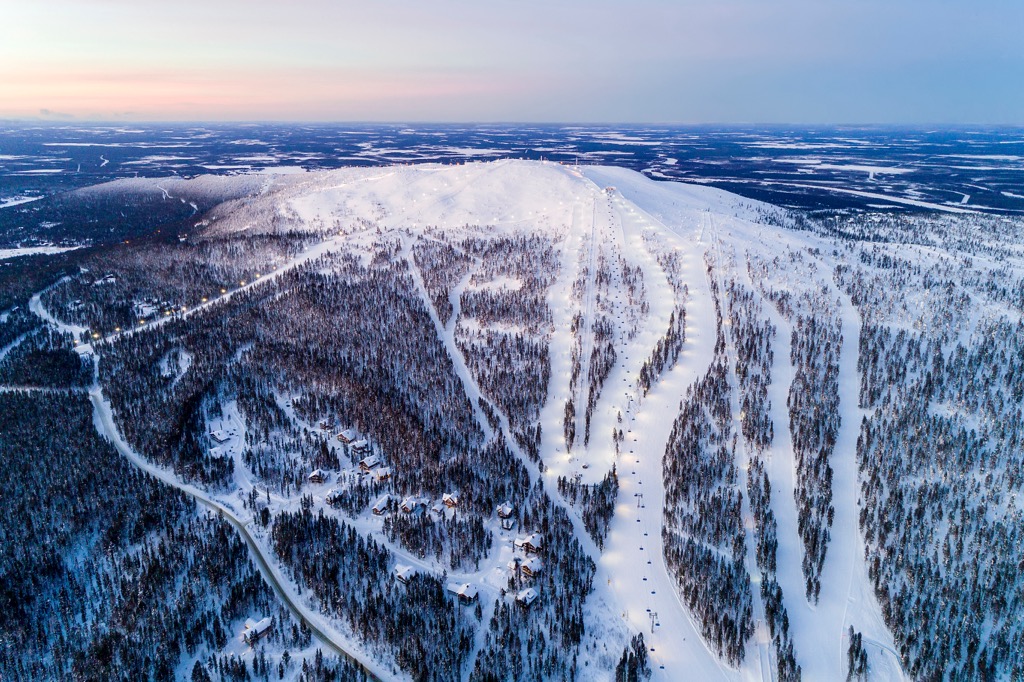
Other major areas for skiing in Finland with more than 10 km (6 mi) of slopes and more than 5 ski lifts each include the following in descending order of size:
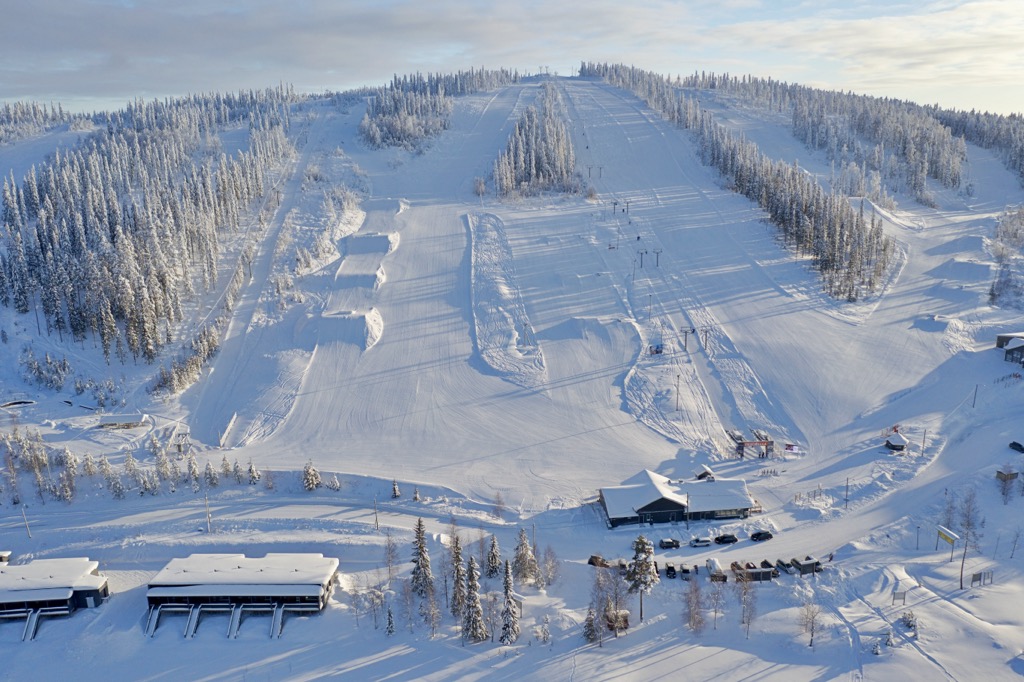
Several other smaller resorts are no less famous for their human history, beautiful scenery, and local attractions: Saariselkä and Luosto in Lapland, and Ukko-Koli in North Karelia. The largest ski resort in less mountainous Western Finland is Sappee with more than 5 km (3 mi) of slopes and 5 ski lifts.
The main ski resort near Helsinki, the largest city in Finland, is Vihti Ski Center.
Check the Finland ski resorts map in the World Mountain Lifts section of the site. It includes information about open ski lifts / slopes in Finland in real-time with opening dates and hours. There are also year-round cable cars, funiculars, cog railways, aerial tramways, and all other types of mountain lifts.

The main travel agency in Finland is called Visit Finland. You can get all the additional information about the country visiting VisitFinland.com and Finland.fi. Visit Finland offers more information for tourism, while the official government site provides better information about Finnish life and visas.
When you arrive in Finland, there is also an official Tourist Information Point run by Visit Finland. It is located on the main railway station in the city center of Helsinki, and it is open daily from 9 am to 4 pm.
Visit Finland Contact Information
Phone +0931013300
Write to helsinki.touristinfo@hel.fi
Visit the MyHelsinki and VisitHelsinki Facebook pages
Chat on the https://www.myhelsinki.fi
In case of emergency, 112 is the emergency phone number of the Emergency Responder Center Agency for ambulance, fire, and police calls in Finland. Learn more about how to use it in an emergency during your travels.
When hiking in Finland's natural areas, you can easily find overnight accommodation. The Finns have invented and organized several types of temporary accommodation, depending on your goals and budget:

Before and after your hiking trip, you can find a room in a hostel, a B&B, an Airbnb, or a hotel in almost all Finnish cities. There are also campsites and cottages, where Finns themselves like to vacation in the summer. In general, the cost of rooms starts at €25 for a hostel and from €50–100 for a cottage per day.
Finland is a country of very small towns and villages. Helsinki is the only major city with a population of one million people, and that number includes the city’s suburbs. Nevertheless, there are a dozen different towns and communities, where you can start a journey through the wilder areas of Suomi. In this article I will briefly discuss the four main cities in the four natural landscapes:
The capital of the country is located in the south on the shores of the Baltic Sea, where you can safely spend a whole week visiting only the outskirts and not get bored. The city is constantly improving towards an even greener populated area with developed public transport, sports facilities and other great things in life.
The city has a huge variety of attractions, of which you will definitely visit the new Oodi Library with its futuristic glass and wooden design, the outdoor year-round swimming pool with a sauna called “Allas”, and the wooden Kamppi Chapel of Silence, which is a haven of peace and serenity in the middle of downtown Helsinki.
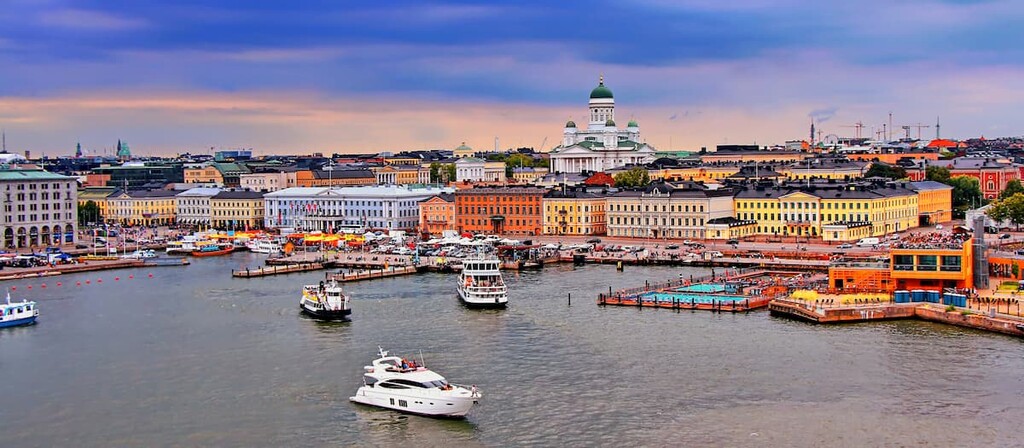
If you’re looking for a trip out of town for the day, Nuuksio National Park is a must visit. It also houses the Haltia Nature Museum, which is well worth checking out.
Official tourist site: MyHelsinki.fi.
The first capital of Finland, Turku is located in the southwest of the country on the shores of the Baltic Sea. The state of Finland originated from here but today it is a tiny and cozy town. Like Helsinki, however, it is a major seaport, where ferries to Sweden depart on a regular basis.
The main attraction of Turku is the medieval castle, which was built in 1280 and from where the country was ruled until the nineteenth century. Because of the medieval atmosphere, it is customary to go here for Christmas markets. This is also where the country's main Christmas tree is installed.
A day trip out of town is an eco-village on the island of Livonsaari, one of these 50,000 islands of the Archipelago Sea.
Official tourist site: VisitTurku.fi.
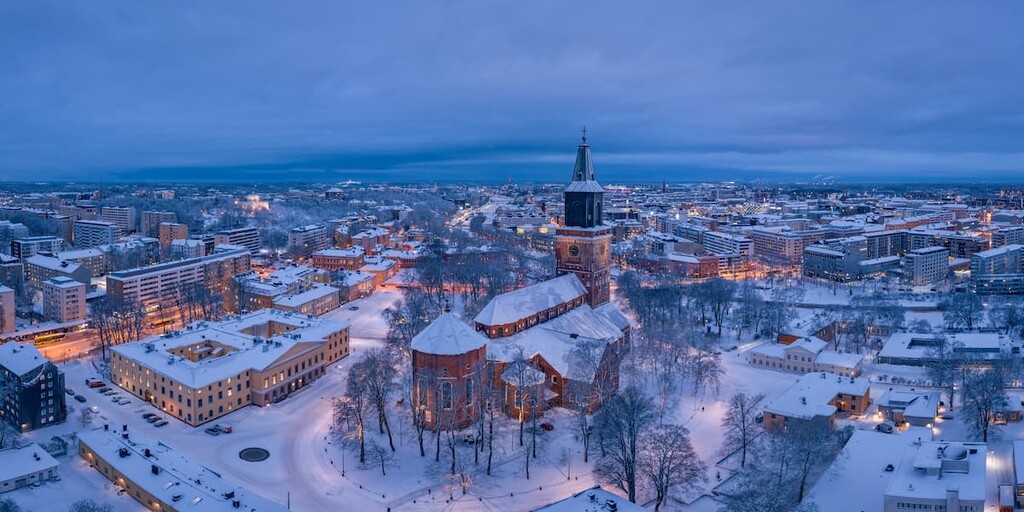
Lappeenranta is the capital of the South Karelia region and the largest and most important city in the east of the country on the border with Russia. The city is located on the shore of Saimaa Lake, on which you can travel by boat in summer or just relax on the city beaches of Hinkaranta and Mullusaari.
The main attraction here is the Fortress of Lappeenranta, which is always free to visit. You can also visit the Old Town Hall, the oldest wooden town hall in Finland built in 1829, and the market on the main town square, where on weekends they sell national goods and lots of vegetables and gifts from Finnish forests.
A day trip out of town is a boat trip on Saimaa Lake and the Saimaa Channel, which connects the lake to the Gulf of Vyborg on the Baltic Sea in Russia.
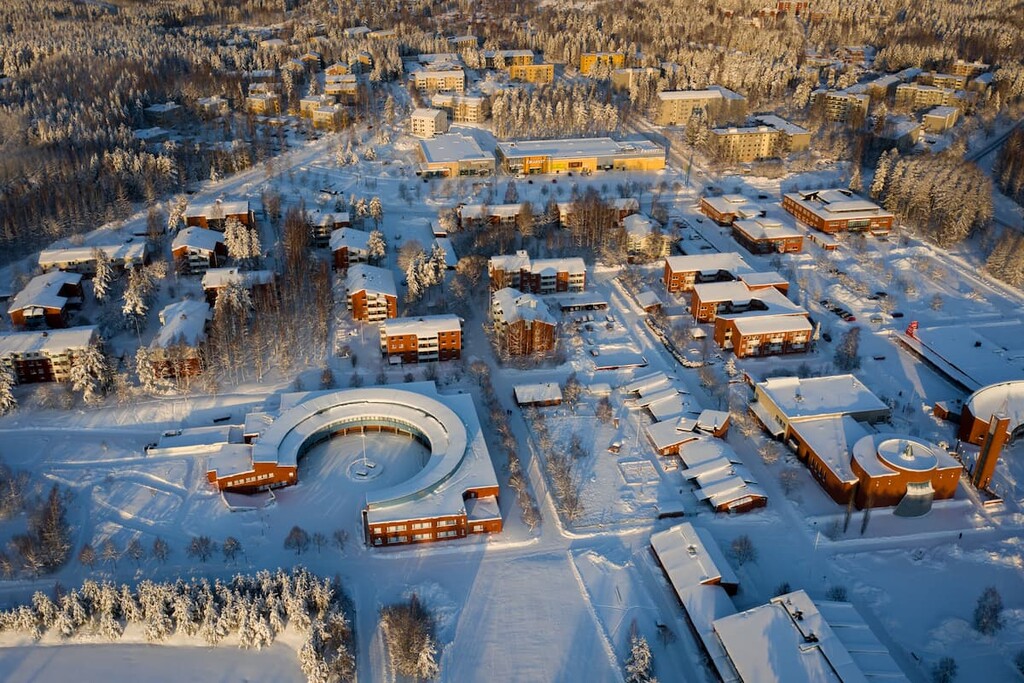
Official tourist site: Lappeenranta.fi.
Rovaniemi is the capital of Lapland and the starting point of your travels into the national parks and wilderness areas of the region. It is a relatively large city, similar to other Finnish cities, but with a unique northern flavor.
One of the main attractions in the city is the Arktikum, the science center and museum dedicated to northern nature, culture, and history. It was built by the world-famous Finnish architect and designer Alvar Aalto, who was inspired by the great northern landscapes of Lapland.
A trip from the city for a day is Santa Claus village, 8 km (4.9 mi) away. If you will travel with kids, they will like it for sure.
Official tourist site: VisitRovaniemi.fi.
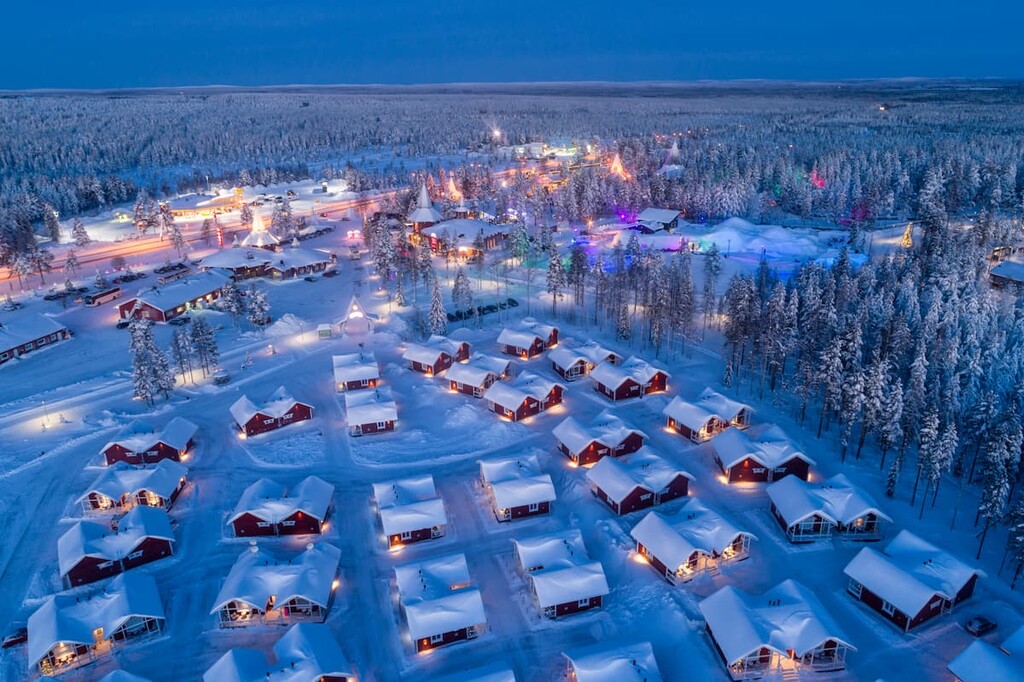
Explore Finland with the PeakVisor 3D Map and identify its summits.








